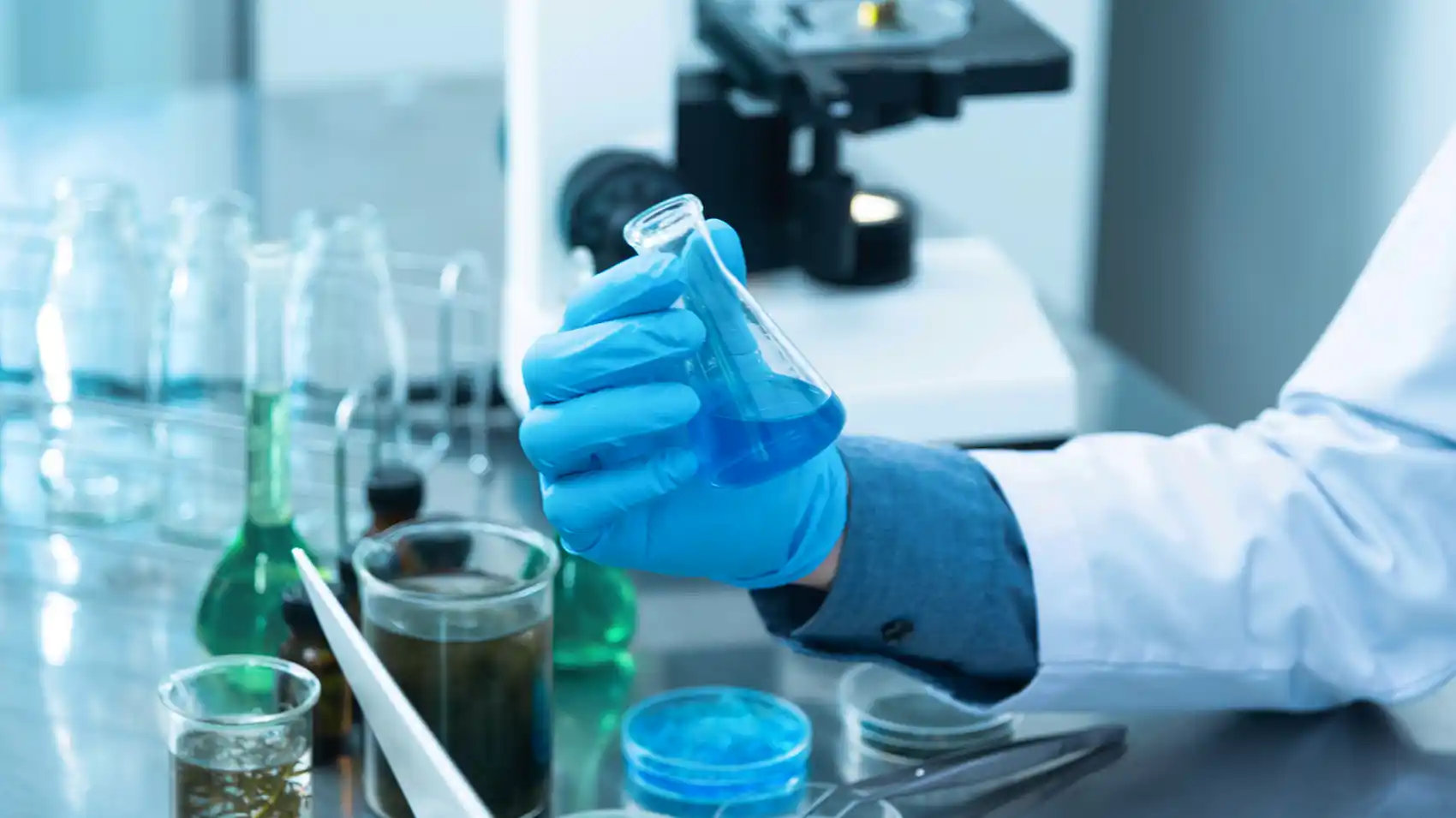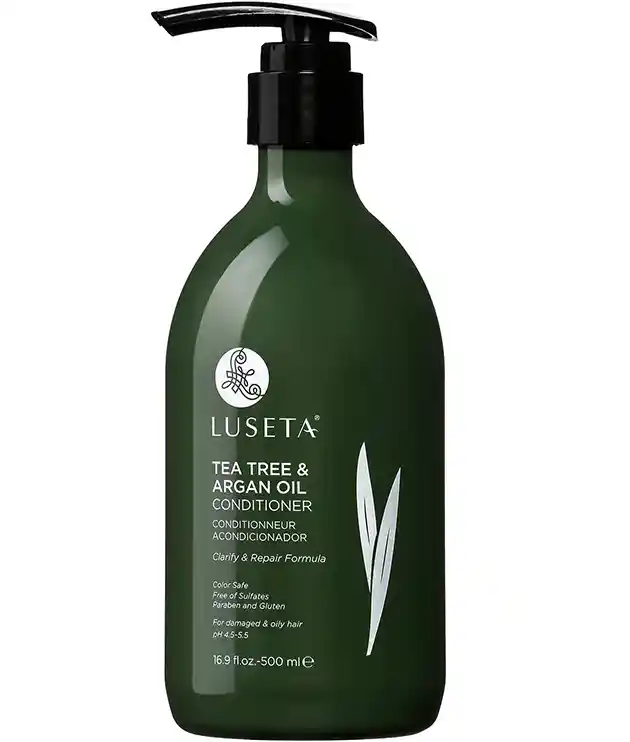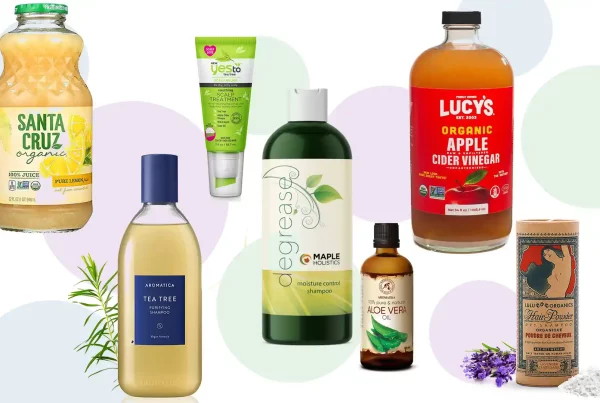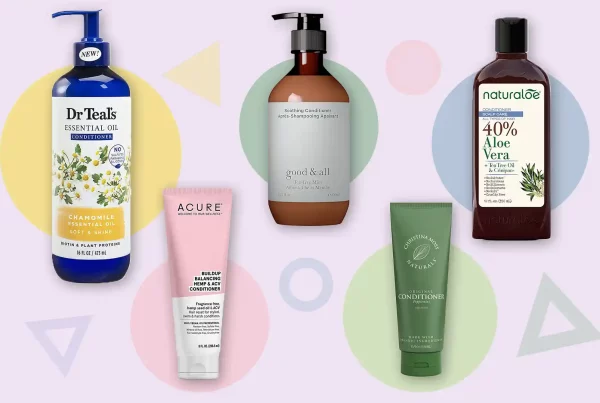Do you really know how many toxic ingredients you spread over your hair on a daily basis? Maybe it’s time to take a closer look at what’s inside your shampoo or conditioner, the one you use everyday. In fact, there are dozens of different chemicals in hair products. As citizens, we think that it can’t be an issue. We assume regulations around the cosmetic industry protect us from harmful molecules. While this is not false, this is not true either. Let’s discover some facts about some of the worst chemicals that live in your favorite hair products.
About Chemicals
We all know that all sorts of chemicals are living in the things we consume. Yet, do we take a moment to check our favorite hair products’ label before buying them? Nah, we just sweep the dirt under the carpet. After all, we think that governmental agencies keep a strict eye on protecting consumers from potential harmful chemicals. But if you did, you’ll most probably find a cocktail of not-so-friendly names that are linked to serious health issues.
In Figures
- According to the Harvard Medical School, a woman uses on average 12 beauty products daily, including hair products.
- Up to 80% of women in the United States, Japan, and the European Union use hair dyes, a hair product well-known for containing aggressive chemicals (source: International Agency for Research on Cancer)
- According to a 2004 study, “1 of every 13 women and one of every 23 men – are exposed to ingredients that are known or probable human carcinogens every day through their use of personal care products”
- Some hair care (e.g. hair dyes) can contain more than 5000 chemicals, as a 2019 study published by the International Journal of Cancer revealed
And don’t think hair products are safer because they’re only impacting limited areas (i.e. the hair and scalp). In fact, they leak onto the whole body (think when you’re under the shower). It’s inevitable that particles eventually get absorbed by our skin. A small quantity of these chemicals found in each product may not be a concern in the short run. On the long run however, dozens of chemicals in hair products can accumulate in your system.
Now, you might wonder whether all these ingredients undergo testing for long-term safety, right? Well, that’s not always true.
No Federal Regulation
In the US, at the federal level, there isn’t strict oversight ensuring that the chemicals you apply to your body are safe. Dr. Kathryn M. Rexrode, associate professor of medicine at Harvard Medical School, says “Products are tested to make sure they don’t cause short-term problems(…). But they’re not tested for long-term safety,”. The responsibility lies solely with the company. The FDA will only intervene when there are complaints about a product potentially causing harm. Note that Europe and Canada have banned some type of chemicals that are still authorized in the US market.
Worst Chemicals in Hair Products
Each of the chemicals listed below has a growing list of evidence that show long-term health issues like cancer, hormonal dysfunctions and other different possible diseases.
Although we focus on hair products only in this article, it’s worth mentioning all the chemicals listed can be found in other personal care and household products.
Benzene
Benzene is classified as a carcinogenic chemical, contributing significantly to increase risk of cancer and other medical conditions. Epidemiological, clinical, and laboratory data corroborate the linkage between benzene and disorders such as aplastic anemia, acute leukemia, bone marrow irregularities, and cardiovascular disease.
In 2022, a laboratory, Valisure, discovered the presence of benzene in numerous products, such as hand sanitizers, sunscreens, deodorant, dry shampoos, conditioners, antiperspirants, deodorants, body sprays and anti-fungal treatments. These findings allude to a pervasive issue of benzene contamination, insinuating its likely presence in an array of products yet to undergo rigorous testing.
- Hair Products: dry shampoos and conditioners
- On the Ingredient List: rarely mentioned as an ingredient (contamination)
- Potential Health Problems: cancer, aplastic anemia, acute leukemia, myelodysplastic syndrome (MDS), bone marrow abnormalities, cardiovascular disease
- At-Risk Populations: all
1,4-dioxane
1,4-dioxane is an industrial chemical that can be found in 22% of cosmetics products. But it may be absent from ingredient lists! That’s because 1,4-dioxane is a contaminant produced when ingredients mixed together react to form a compound. But when applied with certain preparations such as lotions, 1,4-dioxane penetrates the skin easily. Exposed in high quantities, 1,4-dioxane is a potential human carcinogen and is listed as an animal carcinogen by the National Toxicology Program. It is also linked to severe kidney and liver diseases.
- Hair Products: shampoos, hair relaxers, any liquid soap
- On the Ingredient List: “PEG compounds”, “PEG”, “polyethylene”, “polyethylene glycol,” “polyoxyethylene”, “diethylene dioxide”, “diethylene ether”, “dioxane”, “1,4-dioxane,” and “p-dioxane”, “sodium laureth sulfate”
- Potential Health Problems: from eye and nose irritation to potential organ toxicity and cancer
- At-Risk Populations: infants, teenagers, pregnant women and animals
Butylated Compounds
Butylated hydroxyanisole (BHA) and butylated hydroxytoluene (BHT) are derivative of phenol (phenolic compounds), prized for their antioxidant properties and used as preservatives in different hair care products. They are also largely used in the food industry. But there are concerns about their safety. BHA and BHT are connected to cases of endocrine disruption, organ-system toxicity, and other health problems. Note that BHA has been categorized as a “high human health priority” by Health Canada.
- Products: various hair products
- On the Ingredient List: “BHA” and “BHT”
- Potential Health Problems: endocrine disruption, developmental and reproductive toxicity, organ-system toxicity, cancer
- At-Risk Populations: infants and pregnant women
Formaldehyde
Formaldehyde and formaldehyde-releasing preservatives (FRPs) are particularly used in shampoos. Used to help preventing microbes from developing in water-based products. formaldehyde can be easily absorbed through the skin and is linked to allergic skin reactions and even cancer.
- Products: shampoos, baby shampoos and hair-smoothing products
- On the Ingredient List: “formaldehyde”, “polyoxymethylene urea”, “DMDM hydantoin”, “imidazolidinyl urea”, “diazolidinyl urea”, “glyoxal”, “sodium hydroxymethylglycinate” or “2-bromo-2-nitropropane-1,3-diol”.
- Potential Health Problems: cancer and skin irritation
- At-Risk Populations: infants and hair salon workers
Coal Tar
Coal tar is produced during the incomplete combustion of coal and is a well-known carcinogen. Made of hundreds of compounds (e.g. polycyclic aromatic hydrocarbons or PAHs), coal tar can cause tumors and neurological damage. According to the American Academy of Dermatology Association (AAD), further scientific research is needed to know whether using coal tar on the skin can cause skin cancer. According to a federal regulation (FDA), any products must display a warning label if they contain coal tar at levels of 0.5% to 5%, and must indicate specific precautions for that product.
- Products: Hair dyes, shampoos and scalp treatments
- On the Ingredient List: “tar”, “coal tar solution”, “coal”, “crude coal tar”, “estar”, “lavatar”, “carbo-cort”, “impervotar”, “KC 261”, “picis carbonis”, “high solvent naphtha”, “naphtha distillate”, “naphtha”, “benzin B70”, or “petroleum benzin”
- Potential Health Problems: cancer and organ system toxicity
- At-Risk Populations: all
Ethanolamine Compounds (MEA, DEA, TEA)

Ethanolamines are present in many hair products such as shampoos, hair conditioners and dyes. It is thought to cause eye and nose irritation, sore throat, headache, allergies, asthma and even liver tumors. According to the International Labor Organization (ILO), short-term exposure to ethanolamine is suspected to cause problems in the central nervous system. In Europe, diethanolamine (DEA) is prohibited in cosmetics by the European Commission.
- Products: Shampoos, hair conditioners and hair dyes
- On the Ingredient List: “diethanolamine”, “DEA”, “triethanolamine” “TEA”, “DEA-cetyl phosphate”, “DEA oleth-3 phosphate”, “oleamide DEA”, “lauramide DEA”, “linoleamide MEA”, “myristamide DEA”, “TEA-lauryl sulfate”, “stearamide MEA, “cocamide DEA” or “cocamide MEA”
- Potential Health Problems: cancer and organ system toxicity
- At-Risk Populations: all
Methylisothiazolinone and Methylchloroisothiazolinone
Methylisothiazolinone (MIT) and Methylchloroisothiazolinone (CMIT) are preservatives that can be found in many hair products, and are linked to possible neurotoxicity, allergic reactions and lung toxicity.
- Products: shampoo, baby shampoo, hair conditioner, hair spray and hair color
- On the Ingredient List: “OriStar MIT”, “Microcare MT”, “MI”, “MCI”, “2-methyl-4-isothiazoline-3-one”, “5-Chloro-2-methyl-4-isothiazolin-3-one” or “Neolone 950 preservative”
- Potential Health Problems: neuro-toxicity, allergies and inhalation toxicity
- At-Risk Populations: individuals who are allergic to Methylisothiazolinone (MIT) or Methylchloroisothiazolinone (CMIT)
Octinoxate
Octinoxate (or Octyl methoxycinnamate – OMC), is used as a UV filter to protect the products from degrading when exposed to the sun. Octinoxate is an endocrine disruptor that mimics estrogen. It can disrupt thyroid function, and is absorbed rapidly through the skin. Unfortunately, octinoxate is approved for use in cosmetics throughout the world, the maximum authorized concentration depending on local legislation.
- Products: shampoos and hair color
- On the Ingredient List: “octinoxate”, “o methoxycinnamate (OMC)”, “escalol”, “2-ethylhexyl p-methoxycinnamate”, “parsol”, “parsol MCX”, or “parsol MOX”
- Potential Health Problems: organ system toxicity, endocrine disruption, reproductive and developmental toxicity
- At-Risk Populations: all
Parabens
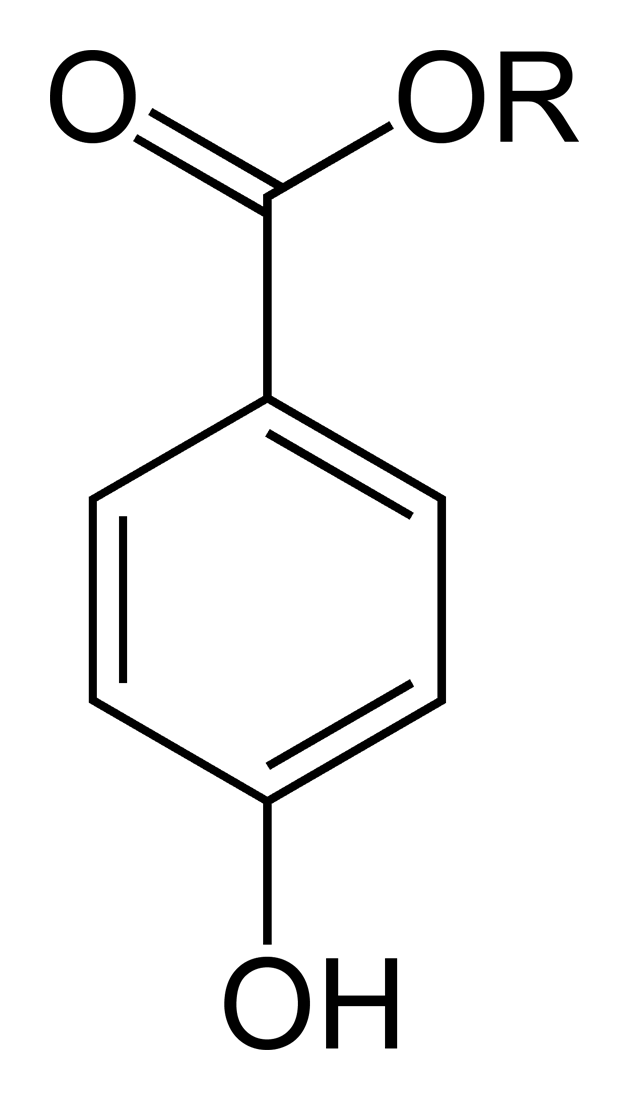
Parabens are preservatives used in a wide variety of personal care products and foods to prevent microbes from growing. These endocrine-disrupting chemicals may be absorbed not only through blood, but also by the digestive system and even through skin. Parabens have been found in breast cancer tissue and may play a role in breast cancer development.
- Products: shampoos and hair conditioners
- On the Ingredient List: “butylparaben”, “ethylparaben”, “isobutylparaben”, “isopropylparaben”, “methylparaben”, or “propylparaben”
- Potential Health Problems: reproductive toxicity, cancer and endocrine disruption
- At-Risk Populations: young children and pregnant women
Phenoxyethanol
Phenoxyethanol is used as a preservative in hair products to limit bacterial growth. Reactions ranging from eczema to life-threatening allergic reactions are linked to phenoxyethanol. Also, infant oral exposure to phenoxyethanol can severely impact on certain nervous system functions.
- Products: shampoos, hair conditioners, hair spray and hair color
- On the Ingredient List: “phenoxyethanol”, “2-Phenoxyethanol”, “PhE” or “Euxyl K® 400”
- Potential Health Problems: allergies and nervous system effects (infants)
- At-Risk Populations: individuals allergic to phenoxyethanol and breast-feeding infants.
Quaternium-15
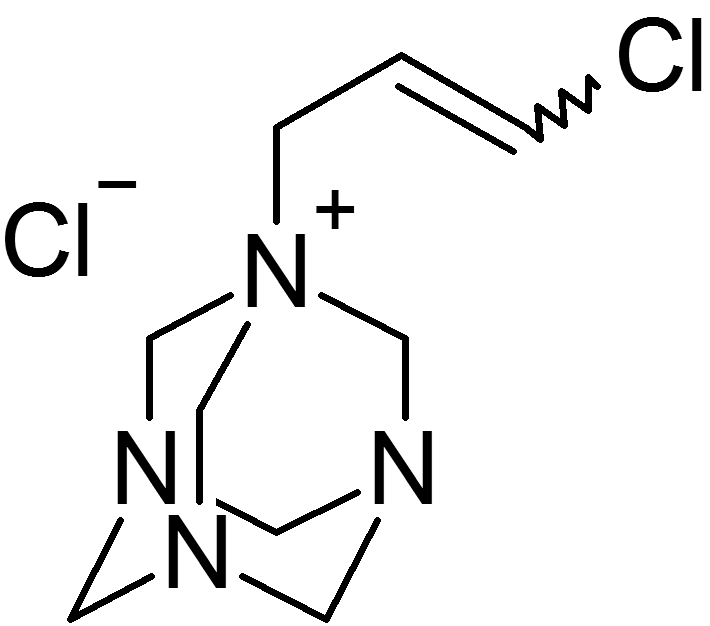
Quaternium-15, a known skin toxicant and allergen, may be especially dangerous when in contact for long periods of time. In the US, there are still no regulations for quaternium-15 use in hair products.
- Products: Hair conditioners and hair styling products
- On the Ingredient List: “Quaternium-15”, “benzalkonium chloride”, “benzethonium chloride”, “centrimonium bromide”, or “polyquaternium–n” (“n” being a number – i.e. “polyquaternium–3”).
- Potential Health Problems: Irritation and sensitization
- At-Risk Populations: all, but especially dangerous for hairdressers and janitors
Check Your Cosmetics’ Ingredients
If you are wondering about an ingredient’s toxicity in your everyday hair care product, check this Ingredient Checker tool 😉 Just type an ingredient, a product or a brand name in the search box and you’ll know everything about it!
Even if well-documented and carefully written, this content should not be used as a substitute for professional diagnosis and treatment. Consult a qualified health care provider before making any health care decisions about any specific medical condition.


